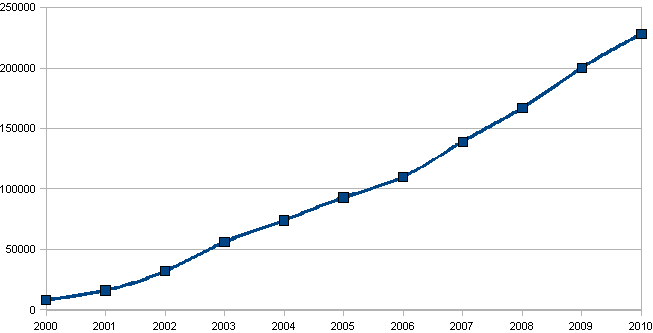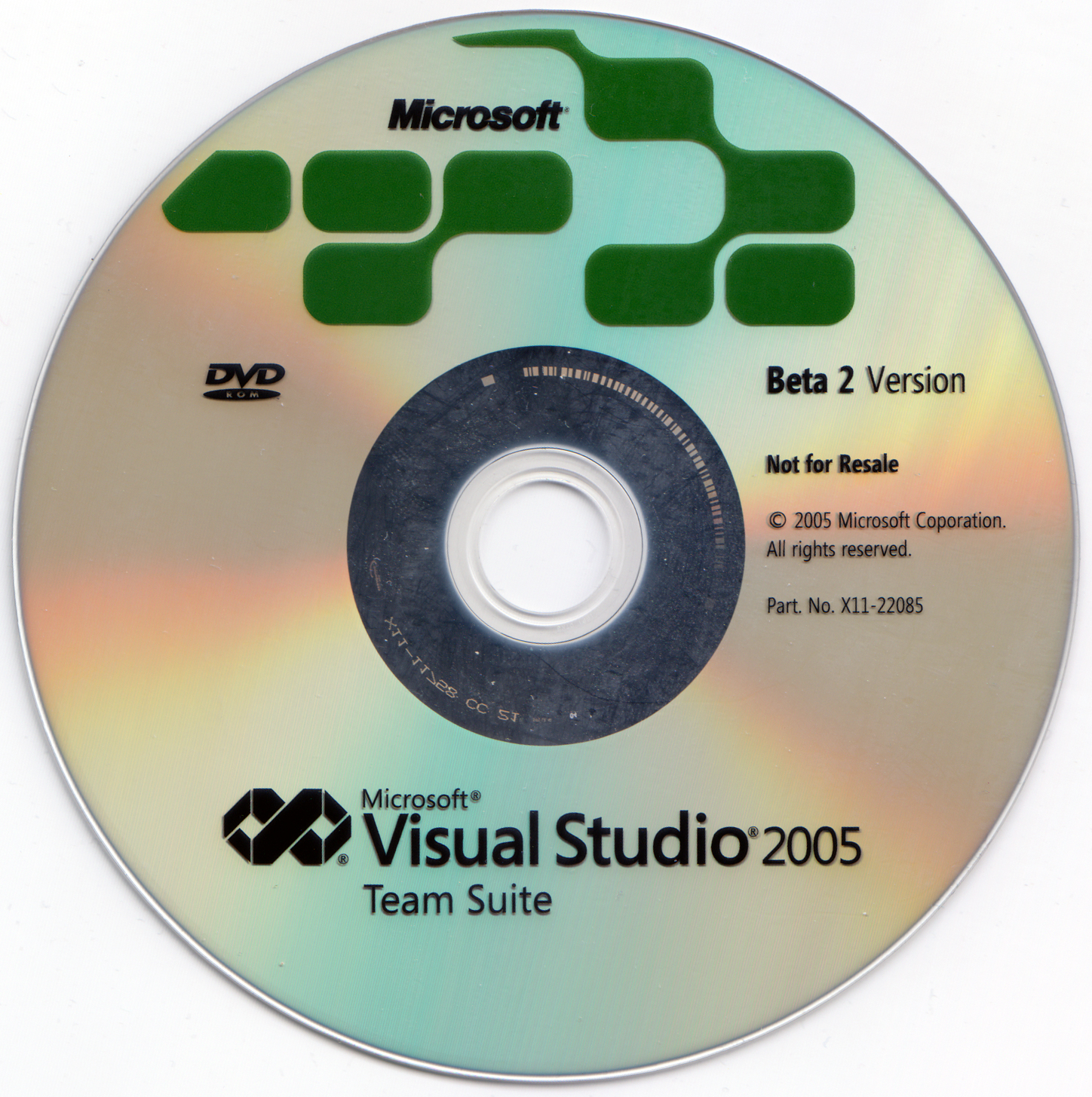|
Object Windows Library
The Object Windows Library (OWL) is a C++ object-oriented application framework designed to simplify desktop application development for Windows and (some releases) OS/2. OWL was introduced by Borland in 1991 and eventually deprecated in 1997 in favor of their Visual Component Library (VCL). Its primary competitor was the Microsoft Foundation Class Library (MFC). OWLNext,OWLNext http://sourceforge.net/p/owlnext an open-source project driven by the OWL user community, has continued the maintenance of OWL, ensuring that the library and applications that use it work with the latest version of Windows and modern C++ compilers. History In the early 1990s, Borland dominated the C++ market. In 1991, Borland introduced Borland C++ 3.0 which included OWL 1.0. At that time, C++ was just beginning to replace C for development of commercial software, driven by the rising of the Windows platform and the rapid adoption of object-oriented design. During this period, OWL was a popular cho ... [...More Info...] [...Related Items...] OR: [Wikipedia] [Google] [Baidu] |
Borland
Borland Software Corporation was a computer technology company founded in 1983 by Niels Jensen, Ole Henriksen, Mogens Glad and Philippe Kahn. Its main business was the development and sale of software development and software deployment products. Borland was first headquartered in Scotts Valley, California, then in Cupertino, California and then in Austin, Texas. In 2009 the company became a full subsidiary of the British firm Micro Focus International plc. History The 1980s: Foundations Borland Ltd. was founded in August 1981 by three Danish citizens, Niels Jensen, Ole Henriksen, and Mogens Glad, to develop products like Word Index for the CP/M operating system using an off-the-shelf company. However, the response to the company's products at the CP/M-82 show in San Francisco showed that a U.S. company would be needed to reach the American market. They met Philippe Kahn, who had just moved to Silicon Valley, and who had been a key developer of the Micral. The three Danes ... [...More Info...] [...Related Items...] OR: [Wikipedia] [Google] [Baidu] |
Novell
Novell, Inc. was an American software and services company headquartered in Provo, Utah, that existed from 1980 until 2014. Its most significant product was the multi- platform network operating system known as Novell NetWare. Under the leadership of chief executive Ray Noorda, NetWare became the dominant form of personal computer networking during the second half of the 1980s and first half of the 1990s. At its high point, NetWare had a 63 percent share of the market for network operating systems and by the early 1990s there were over half a million NetWare-based networks installed worldwide encompassing more than 50 million users. Novell technology contributed to the emergence of local area networks, which displaced the dominant mainframe computing model and changed computing worldwide. Novell was the second-largest maker of software for personal computers, trailing only Microsoft Corporation, and became instrumental in making Utah Valley a focus for technology and softw ... [...More Info...] [...Related Items...] OR: [Wikipedia] [Google] [Baidu] |
SourceForge
SourceForge is a web service that offers software consumers a centralized online location to control and manage open-source software projects and research business software. It provides source code repository hosting, bug tracking, mirroring of downloads for load balancing, a wiki for documentation, developer and user mailing lists, user-support forums, user-written reviews and ratings, a news bulletin, micro-blog for publishing project updates, and other features. SourceForge was one of the first to offer this service free of charge to open-source projects. Since 2012, the website has run on Apache Allura software. SourceForge offers free hosting and free access to tools for developers of free and open-source software. , the SourceForge repository claimed to host more than 502,000 projects and had more than 3.7 million registered users. Concept SourceForge is a web-based source code repository. It acts as a centralized location for free and open-source software p ... [...More Info...] [...Related Items...] OR: [Wikipedia] [Google] [Baidu] |
C++Builder
C++Builder is a rapid application development (RAD) environment, originally developed by Borland and owned by Embarcadero Technologies (a subsidiary of Idera), for writing programs in the C++ programming language currently targeting Windows (both IA-32 and x64), iOS and for several releases, macOS and Android (still supported, but only Android 32-bit apps.) C++Builder combines the Visual Component Library and IDE written in Object Pascal with multiple C++ compilers. Most components developed in Delphi can be used in C++Builder with no or little modification, although the reverse is not true, but this constraint is valid only for source code. Binary code generated by Delphi can easily be linked to binary code generated by C++Builder and vice versa to generate an executable written in both Object Pascal and C++. With this approach, C++ can be called from Object Pascal and vice versa. Since both Delphi and C++ use the same back end linker, the debugger can single step from De ... [...More Info...] [...Related Items...] OR: [Wikipedia] [Google] [Baidu] |
Visual Studio
Visual Studio is an integrated development environment (IDE) from Microsoft. It is used to develop computer programs including websites, web apps, web services and mobile apps. Visual Studio uses Microsoft software development platforms such as Windows API, Windows Forms, Windows Presentation Foundation, Windows Store and Microsoft Silverlight. It can produce both native code and managed code. Visual Studio includes a code editor supporting IntelliSense (the code completion component) as well as code refactoring. The integrated debugger works both as a source-level debugger and a machine-level debugger. Other built-in tools include a code profiler, designer for building GUI applications, web designer, class designer, and database schema designer. It accepts plug-ins that expand the functionality at almost every level—including adding support for source control systems (like Subversion and Git) and adding new toolsets like editors and visual designers for domain-specifi ... [...More Info...] [...Related Items...] OR: [Wikipedia] [Google] [Baidu] |
Windows 95
Windows 95 is a consumer-oriented operating system developed by Microsoft as part of its Windows 9x family of operating systems. The first operating system in the 9x family, it is the successor to Windows 3.1x, and was released to manufacturing on July 14, 1995, and generally to retail on August 24, 1995, almost three months after the release of Windows NT 3.51. Windows 95 merged Microsoft's formerly separate MS-DOS and Microsoft Windows products, and featured significant improvements over its predecessor, most notably in the graphical user interface (GUI) and in its simplified "plug-and-play" features. There were also major changes made to the core components of the operating system, such as moving from a mainly cooperatively multitasked 16-bit architecture to a 32-bit preemptive multitasking architecture, at least when running only 32-bit protected mode applications. Accompanied by an extensive marketing campaign, Windows 95 introduced numerous functions and features that ... [...More Info...] [...Related Items...] OR: [Wikipedia] [Google] [Baidu] |
SunOS
SunOS is a Unix-branded operating system developed by Sun Microsystems for their workstation and server computer systems. The ''SunOS'' name is usually only used to refer to versions 1.0 to 4.1.4, which were based on BSD, while versions 5.0 and later are based on UNIX System V Release 4, and are marketed under the brand name '' Solaris''. History SunOS 1 only supported the Sun-2 series systems, including Sun-1 systems upgraded with Sun-2 ( 68010) CPU boards. SunOS 2 supported Sun-2 and Sun-3 (68020) series systems. SunOS 4 supported Sun-2 (until release 4.0.3), Sun-3 (until 4.1.1), Sun386i (4.0, 4.0.1 and 4.0.2 only) and Sun-4 ( SPARC) architectures. Although SunOS 4 was intended to be the first release to fully support Sun's new SPARC processor, there was also a SunOS 3.2 release with preliminary support for Sun-4 systems. SunOS 4.1.2 introduced support for Sun's first sun4m-architecture multiprocessor machines (the SPARCserver 600MP series); s ... [...More Info...] [...Related Items...] OR: [Wikipedia] [Google] [Baidu] |
HP-UX
HP-UX (from "Hewlett Packard Unix") is Hewlett Packard Enterprise's proprietary implementation of the Unix operating system, based on Unix System V (initially System III) and first released in 1984. Current versions support HPE Integrity Servers, based on Intel's Itanium architecture. Earlier versions of HP-UX supported the HP Integral PC and HP 9000 Series 200, 300, and 400 computer systems based on the Motorola 68000 series of processors, the HP 9000 Series 500 computers based on HP's proprietary FOCUS architecture, and later HP 9000 Series models based on HP's PA-RISC instruction set architecture. HP-UX was the first Unix to offer access control lists for file access permissions as an alternative to the standard Unix permissions system. HP-UX was also among the first Unix systems to include a built-in logical volume manager. HP has had a long partnership with Veritas Software, and uses VxFS as the primary file system. It is one of four commercial operating systems ... [...More Info...] [...Related Items...] OR: [Wikipedia] [Google] [Baidu] |
Tru64 UNIX
Tru64 UNIX is a discontinued 64-bit UNIX operating system for the Alpha instruction set architecture (ISA), currently owned by Hewlett-Packard (HP). Previously, Tru64 UNIX was a product of Compaq, and before that, Digital Equipment Corporation (DEC), where it was known as Digital UNIX (originally DEC OSF/1 AXP). As its original name suggests, Tru64 UNIX is based on the OSF/1 operating system. DEC's previous UNIX product was known as Ultrix and was based on BSD. It is unusual among commercial UNIX implementations, as it is built on top of the Mach kernel developed at Carnegie Mellon University. (Other UNIX and UNIX-like implementations built on top of the Mach kernel are GNU Hurd, NeXTSTEP, MkLinux, macOS and Apple iOS.) Tru64 UNIX required the SRM boot firmware found on Alpha-based computer systems. DEC OSF/1 AXP In 1988, Digital Equipment Corporation (DEC) joined with IBM, Hewlett-Packard, and others to form the Open Software Foundation (OSF). A primary aim was to develo ... [...More Info...] [...Related Items...] OR: [Wikipedia] [Google] [Baidu] |
Raymond Noorda
Raymond John "Ray" Noorda (19 June 1924 – 9 October 2006) was a U.S. computer businessman. He was CEO of Novell between 1982 and 1994. He also served as chairman of Novell until he was replaced in 1994. Early life Noorda was born in Ogden, Utah, the third son of Dutch immigrants Bertus Noorda and Alida Margaretha van den Berg. He attended Weber State College in Ogden. During World War II, he served in the U.S. Navy for two years as an electronics technician, working with radar systems. He graduated '' cum laude'' with a bachelor's degree in engineering from the University of Utah in 1949. Noorda worked for General Electric from graduation until 1971, after which he worked at a number of California companies. Personal life Noorda was a member of the Church of Jesus Christ of Latter-day Saints (LDS Church). He married Lewena "Tye" Taylor in 1950, and they were later sealed in the Salt Lake Temple. Among the positions that Noorda held in the LDS Church were counselor in ... [...More Info...] [...Related Items...] OR: [Wikipedia] [Google] [Baidu] |
Cross-platform
In computing, cross-platform software (also called multi-platform software, platform-agnostic software, or platform-independent software) is computer software that is designed to work in several computing platforms. Some cross-platform software requires a separate build for each platform, but some can be directly run on any platform without special preparation, being written in an interpreted language or compiled to portable bytecode for which the interpreters or run-time packages are common or standard components of all supported platforms. For example, a cross-platform application may run on Microsoft Windows, Linux, and macOS. Cross-platform software may run on many platforms, or as few as two. Some frameworks for cross-platform development are Codename One, Kivy, Qt, Flutter, NativeScript, Xamarin, Phonegap, Ionic, and React Native. Platforms ''Platform'' can refer to the type of processor (CPU) or other hardware on which an operating system (OS) or application runs ... [...More Info...] [...Related Items...] OR: [Wikipedia] [Google] [Baidu] |
AppWare
AppWare was a rapid application development system for Microsoft Windows and the classic Mac OS based on a simple graphical programming language. Applications were constructed by connecting together icons representing objects in the program and their commands. The resulting logic could be compiled on either platform and typically only required minor changes to the GUI layout to complete the port. Originally introduced in 1989 as Serius89 by Serius Corporation, and eventually becoming Serius Developer, it is best known as AppWare when it was owned and marketed by Novell starting in 1993. Novell sold the product off in 1996, it was renamed MicroBrew, and development eventually ceased during 1997. History Serius Joe Firmage started development of what would become AppWare circa June 1987, originally in order to help develop an accounting system for his parents' greeting card company. In 1989, when he was 18 years old, he and his brother Ed formed Serius Corp. to market the product ... [...More Info...] [...Related Items...] OR: [Wikipedia] [Google] [Baidu] |




